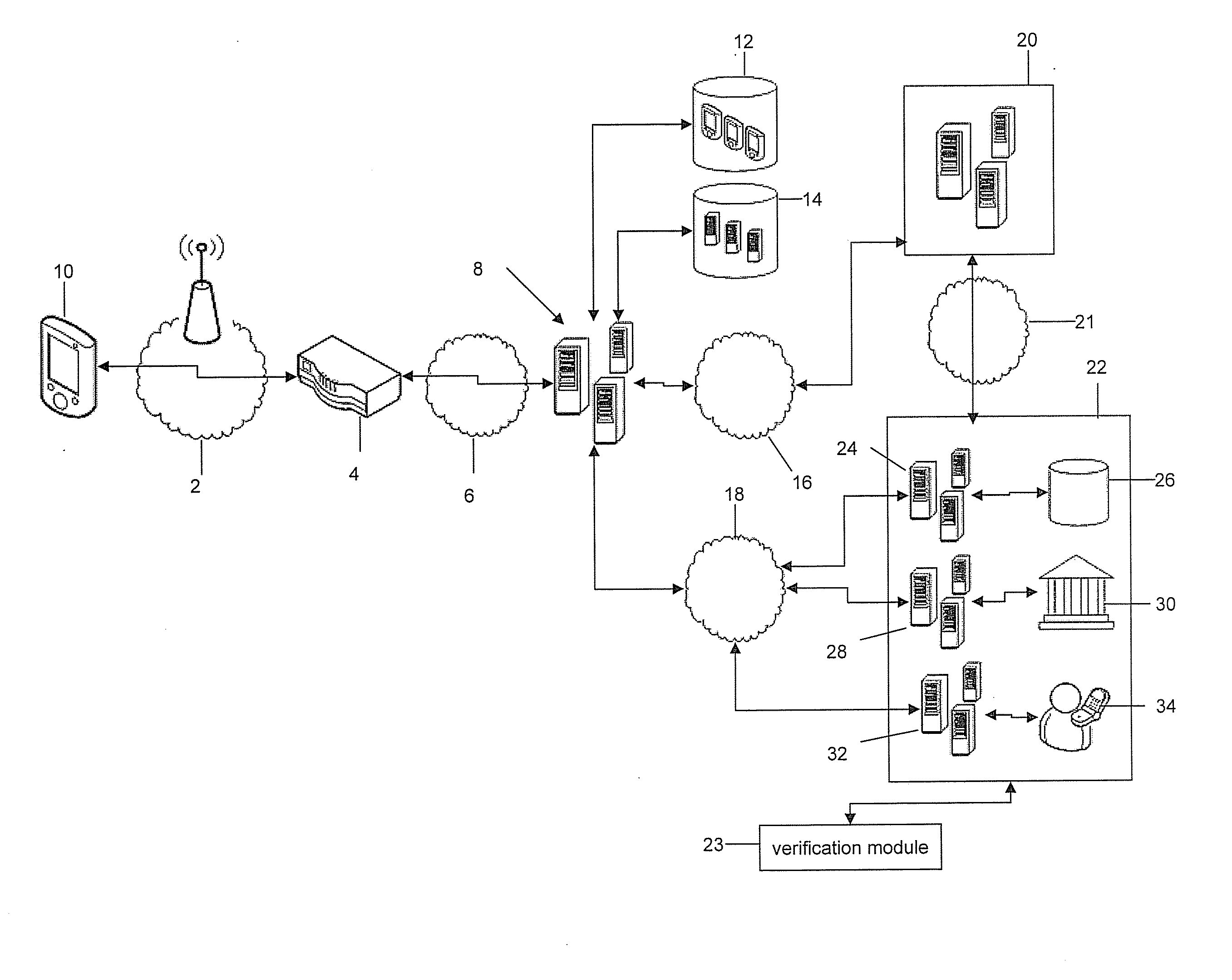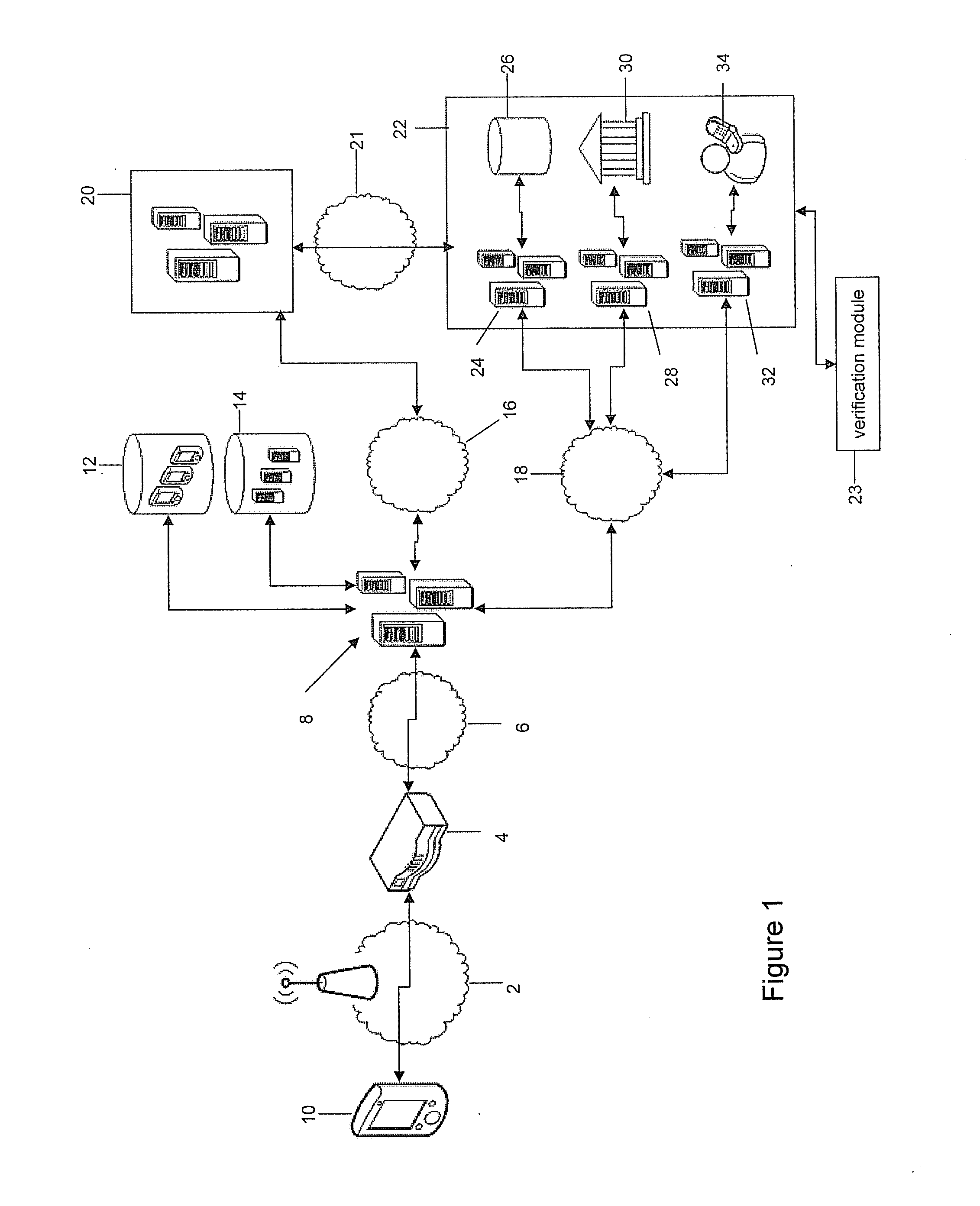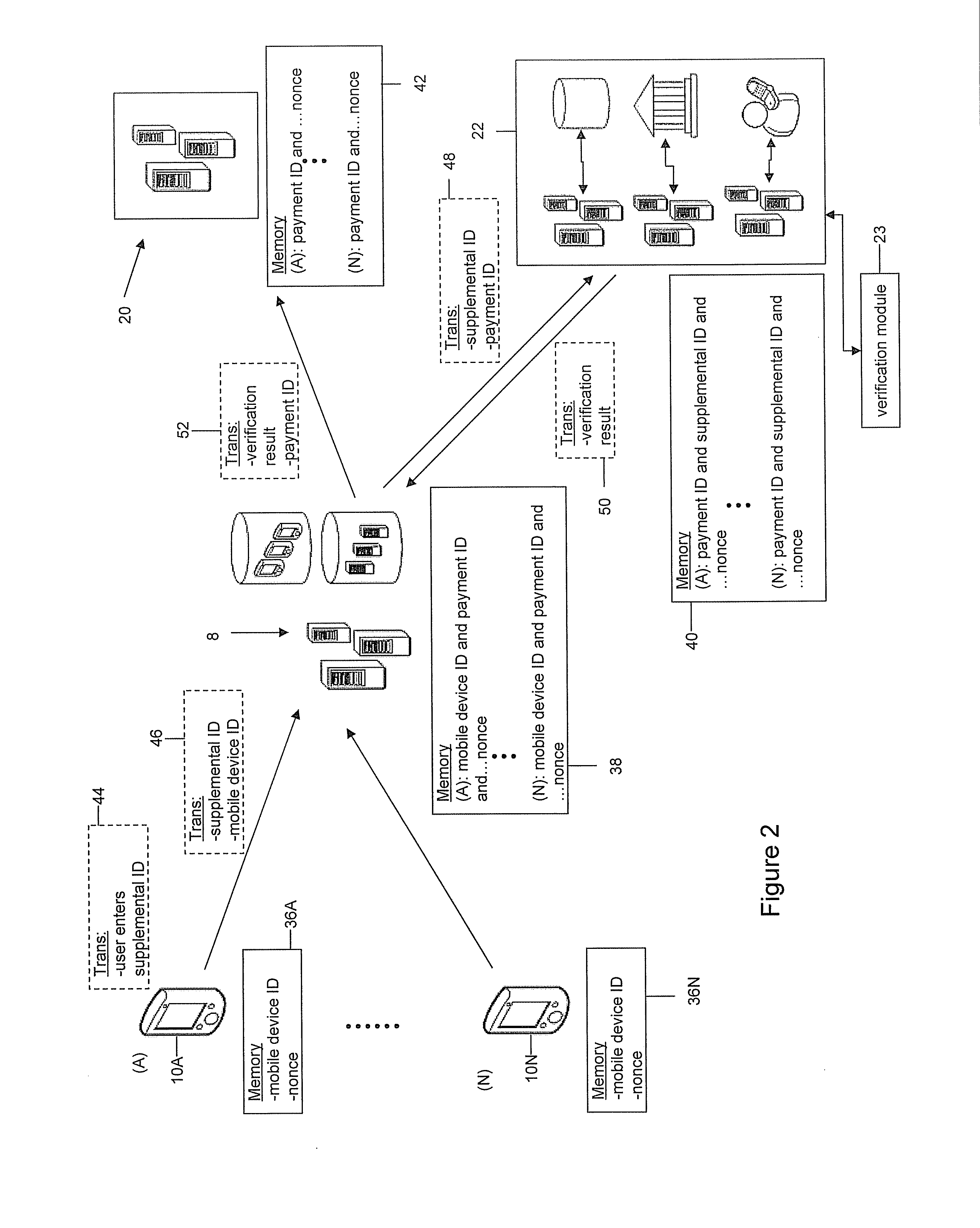System and Method for Authenticating Transactions Through a Mobile Device
a mobile device and transaction technology, applied in payment protocols, network data management, security arrangements, etc., can solve the problems of less security, high inconvenient and costly accidents, and the experience of website-based transactions is frustrating
- Summary
- Abstract
- Description
- Claims
- Application Information
AI Technical Summary
Benefits of technology
Problems solved by technology
Method used
Image
Examples
example 1
Authenticating E-Commerce / M-Commerce Transactions
[0138]The proposed systems and methods are used in an m-commerce or e-commerce transaction to reduce the risk of a fraudulent transaction, by ensuring a user can reasonably prove he or she knows a supplemental ID, such as a CVV2 number or 3D Secure password, and can also reasonably prove he or she has physical access to a trusted mobile device 10. After a user has finished selecting products or services from a merchant's website, the user will click on an HTML submit button (or similar mechanism), indicating his or her intent to complete a transaction. The merchant's server system will direct the mobile device's web browser to a “checkout” webpage, summarizing the transaction details.
[0139]In an embodiment using a CVV2 number, when the known mobile device 10 (e.g. a mobile device 10 that has successfully been registered) arrives at the “checkout” webpage, the payment gateway 8 will use the mobile device ID to retrieve the associated c...
example 2
Authenticating E-Commerce / M-Commerce Transactions
[0142]Another example embodiment is used in an m-commerce or e-commerce transaction to reduce the risk of a fraudulent transaction, by ensuring a user can reasonably prove he or she knows a PIN, or similar credential, such as a CVV2 number, and can also reasonably prove he or she has physical access to the mobile device 10.
[0143]After a user has finished selecting products or services from a merchant's website, the user will click on an HTML submit button (or similar mechanism), indicating his or her intent to complete a transaction. The merchant's server system will direct the mobile device's browser to a “checkout” webpage, summarizing the transaction details.
[0144]When a known mobile device 10 (e.g. a mobile 10 that has successfully been used to complete the registration or reassociation process) arrives at the “checkout” webpage, the payment gateway 8 will use the mobile device ID to retrieve the associated credit card number from...
example 3
Enhancing Existing Protocols
[0148]Another example embodiment involves the use of existing verification protocols, such as 3D Secure (e.g. implementation provided under the trade-marks Verified By Visa, MasterCard SecureCode, or J / Secure) to ensure that a user is able to prove he or she knows a password. The proposed systems and methods use such verification protocols to have a user also reasonably prove he or she is making the transaction from a specific trusted mobile device 10. After a user has finished selecting products or services from a merchant's website using the mobile device 10, the user will click on an HTML submit button (or similar mechanism), indicating his or her intent to complete a transaction. The merchant's server system may direct the mobile device's browser to a “checkout” webpage, summarizing the transaction details. The user then enters the requested 3D Secure password (e.g. supplemental ID) into the merchant's webpage. Upon submitting the password, the mercha...
PUM
 Login to View More
Login to View More Abstract
Description
Claims
Application Information
 Login to View More
Login to View More - R&D
- Intellectual Property
- Life Sciences
- Materials
- Tech Scout
- Unparalleled Data Quality
- Higher Quality Content
- 60% Fewer Hallucinations
Browse by: Latest US Patents, China's latest patents, Technical Efficacy Thesaurus, Application Domain, Technology Topic, Popular Technical Reports.
© 2025 PatSnap. All rights reserved.Legal|Privacy policy|Modern Slavery Act Transparency Statement|Sitemap|About US| Contact US: help@patsnap.com



